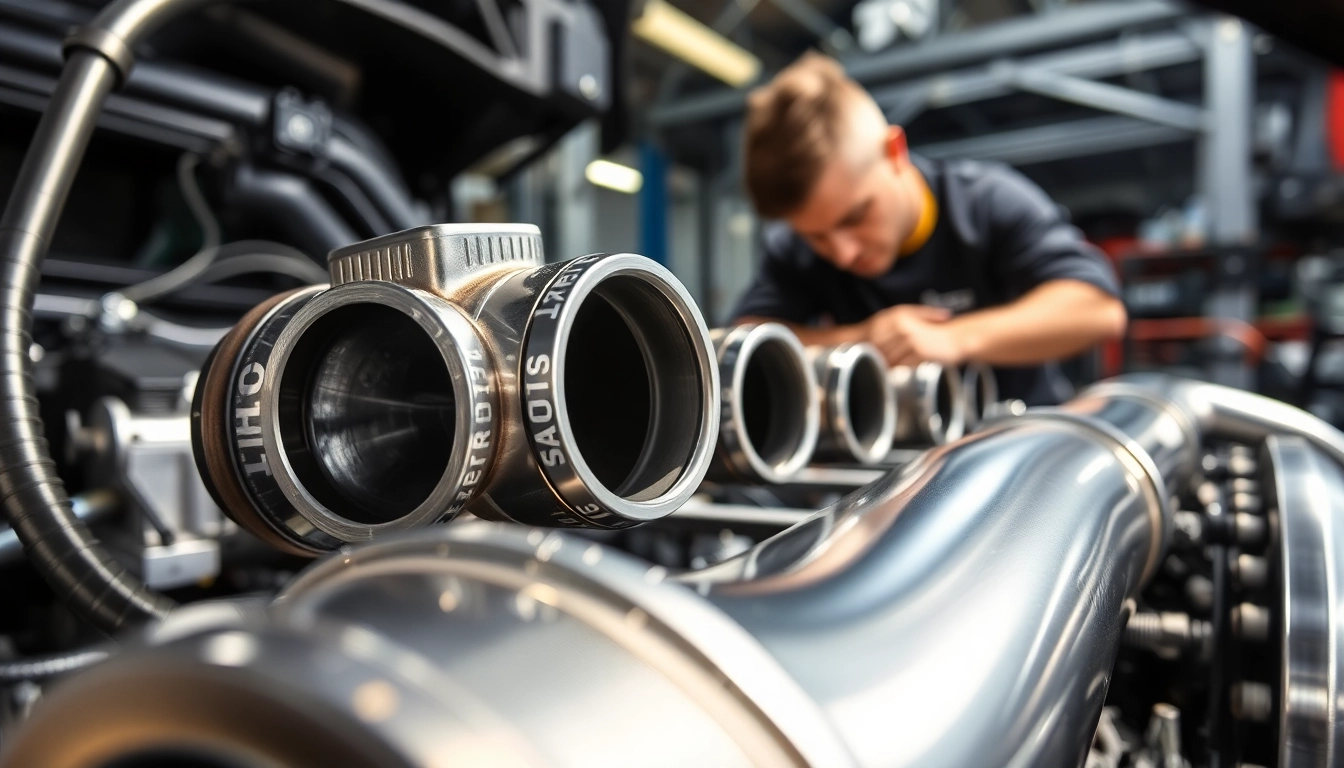
What is a Charge Pipe? Understanding its Role and Benefits in Turbocharged Engines
What is a Charge Pipe?
In the realm of automotive engineering, particularly within turbocharged engines, the term what is a charge pipe often arises as a point of interest for car enthusiasts and engineers alike. A charge pipe is a crucial component designed to optimize air intake and improve engine performance by directing compressed air from the turbocharger to the engine’s intake manifold. This article will delve deep into the world of charge pipes, their functions, components, materials, significance in turbocharged engines, and the benefits of upgrading them.
Definition and Function of Charge Pipe
A charge pipe is essentially a conduit for routing the compressed air generated by a turbocharger through the engine’s intake system. It serves as a transitional bridge between the intercooler and the throttle body, allowing the turbo’s pressurized air to reach the combustion chamber efficiently. Typically made from materials such as aluminum, stainless steel, or reinforced rubber, charge pipes are engineered to withstand high pressure and temperature variations.
The main function of a charge pipe is to ensure that compressed air flows smoothly from the turbocharger to the engine, which is vital for maintaining boost levels and optimizing performance. Any restriction or leak in the charge pipe can lead to a significant drop in turbo efficiency, resulting in reduced power output and engine responsiveness.
Components of Charge Pipe Systems
Understanding the components of charge pipe systems is essential for anyone looking to optimize their vehicle’s performance. A typical charge pipe setup includes:
- Intercooler: This component cools down the compressed air before it enters the engine, helping to increase density and improve combustion efficiency.
- Blow-off Valve (BOV): Often integrated into the charge pipe, the BOV helps release excess pressure when the throttle is closed, preventing compressor surge and protecting the turbocharger.
- Diverter Valve: Similar in function to a BOV, the diverter valve redirects the excess air back into the intake system instead of venting it to the atmosphere.
- Silicone Hoses: In many aftermarket setups, silicone hoses are used for flexibility and durability, allowing for better thermal resistance and lower risk of blow-off.
Material Types and Their Benefits
Charge pipes can be manufactured from various materials, each with its own set of advantages and disadvantages. Here’s a breakdown of the most common materials used:
- Aluminum: Lightweight and resistant to corrosion, aluminum charge pipes are a popular choice among enthusiasts. Their ability to dissipate heat quickly helps maintain optimal performance.
- Stainless Steel: Known for its durability, stainless steel can withstand high temperatures and harsh environments. However, it is heavier than aluminum, which may be a consideration for performance-oriented builds.
- Silicone: Mainly used for couplings and connectors, silicone provides flexibility and can handle high pressures, making it an excellent choice for aggressive tuning setups.
Importance of Charge Pipe in Turbocharged Engines
Charge pipes play a pivotal role in the performance and efficiency of turbocharged engines. They are crucial for ensuring that the engine receives the correct amount of air needed for optimal combustion processes.
How Charge Pipes Improve Performance
The efficiency of a charge pipe directly influences how power is delivered from the turbo to the engine. When both the intake system and charge pipe are designed correctly, they can significantly improve engine responsiveness, throttle response, and overall performance. In turbocharged vehicles, a well-optimized charge pipe system reduces turbo lag and enhances peak boost pressure, ultimately contributing to greater power output.
Charge Pipe vs. Other Airflow Components
To further understand the significance of charge pipes, it’s essential to compare them with other components in the intake system. Charge pipes primarily serve the purpose of transferring compressed air from the intercooler to the throttle body, while other components like the boost pipe transport air to the intercooler from the turbocharger and the intake manifold. In essence, while all these components work synergistically to enhance airflow, the charge pipe’s unique role is critical for ensuring that pressurized air reaches the engine efficiently.
Common Issues with Stock Charge Pipes
Stock charge pipes are typically made from basic materials that may not withstand high boost levels. This can lead to a myriad of issues such as:
- Boost Leaks: Weak connections and poor design may cause leaks, resulting in lower air pressure reaching the engine and less power.
- Heat Soak: Factory pipes may not dissipate heat effectively, causing a reduction in performance due to overly hot air reaching the engine.
- Material Fatigue: Over time, the stock plastic charge pipes can crack or break, leading to failures that require immediate attention.
Choosing the Right Charge Pipe for Your Vehicle
When it comes to making decisions about charge pipe upgrades, there are several important factors to consider. Selecting the right charge pipe can significantly impact your vehicle’s performance.
Factors to Consider When Selecting a Charge Pipe
Here are the key factors to keep in mind when choosing a charge pipe:
- Vehicle Compatibility: Make sure the charge pipe is specifically designed for your make and model to ensure a proper fit.
- Material Quality: Opt for high-quality materials that can withstand the pressure and temperature demands of your specific setup.
- Design and Routing: Consider the design of the charge pipe for optimal airflow efficiency. The less restrictive the design, the better the airflow.
Aftermarket Options Compared to OEM
While OEM charge pipes are designed to meet the basic performance needs of the vehicle, aftermarket options often provide superior quality and performance enhancements. They typically use better materials and designs aimed at enthusiasts looking to maximize their engine’s capabilities. Often, aftermarket charge pipes also come with features like additional mounting points for BOVs, which can enhance performance further.
Installation Benefits of High-Quality Charge Pipes
Installing a high-quality charge pipe can yield numerous benefits for your vehicle. These include:
- Improved Turbo Response: Enhanced airflow through the charge pipe improves turbocharger efficiency, resulting in quicker spool times.
- Greater Power Output: By reducing boost leaks and enhancing air delivery, you may realize significant gains in horsepower and torque.
- Enhanced Reliability: High-quality materials reduce the likelihood of failures, ensuring your performance enhancements last longer.
Upgrading Your Charge Pipe: What to Expect
Upgrading your charge pipe is an exciting modification that can lead to noticeable performance improvements. However, it’s essential to know what to expect throughout the process.
Performance Gains from Charge Pipe Upgrades
Many drivers report substantial performance gains after upgrading their charge pipes. Typical benefits include improved acceleration, better throttle response, and a more efficient engine. Especially in highly-tuned turbocharged applications, the difference can be quite dramatic, with some vehicles displaying power increases of 5-10% or more.
Potential Drawbacks and Considerations
While upgrading your charge pipe generally yields beneficial results, there are potential drawbacks to consider:
- Initial Cost: Quality charge pipes can be expensive, and installation may require additional tools or professional help.
- Complex Installation: Depending on your vehicle and the charge pipe design, installation can be straightforward or quite complex, sometimes requiring modifications to existing components.
Real-World User Experiences
The feedback from users after installing aftermarket charge pipes is overwhelmingly positive. Many have noted improved engine response and a more engaging driving experience. However, feedback also highlights the importance of proper installation and selecting the right product for their vehicle.
FAQs about Charge Pipes
What is a charge pipe used for?
A charge pipe is primarily used in turbocharged vehicles to transport compressed air from the turbo to the engine’s intake manifold efficiently.
Does a charge pipe add power?
While a charge pipe alone does not generate power, it can help maximize the effectiveness of the turbocharger and potentially lead to increased power output when combined with other performance enhancements.
How can I maintain my charge pipe?
Regular inspection for leaks, ensuring secure connections, and cleaning any residual build-up can help maintain the effectiveness and longevity of your charge pipe system.
